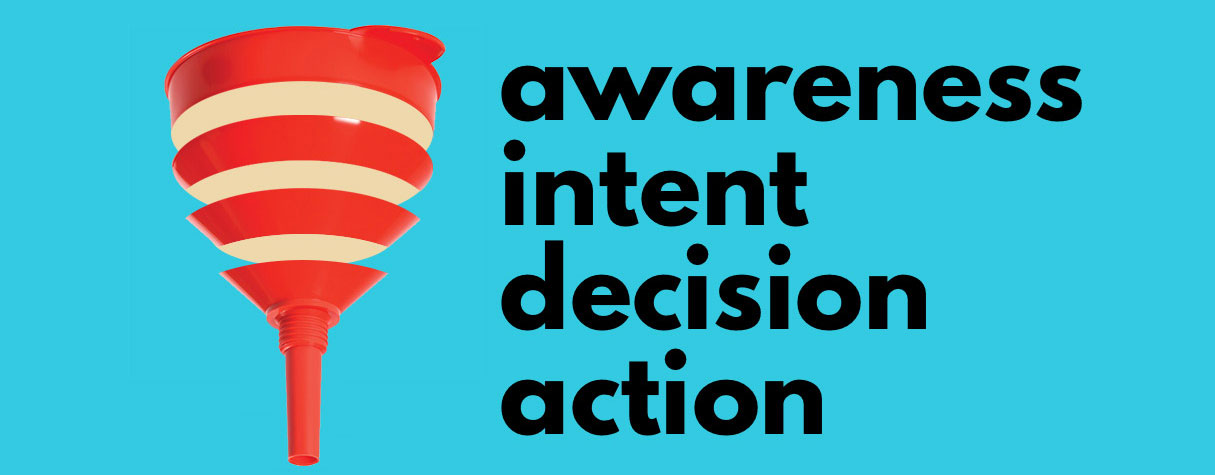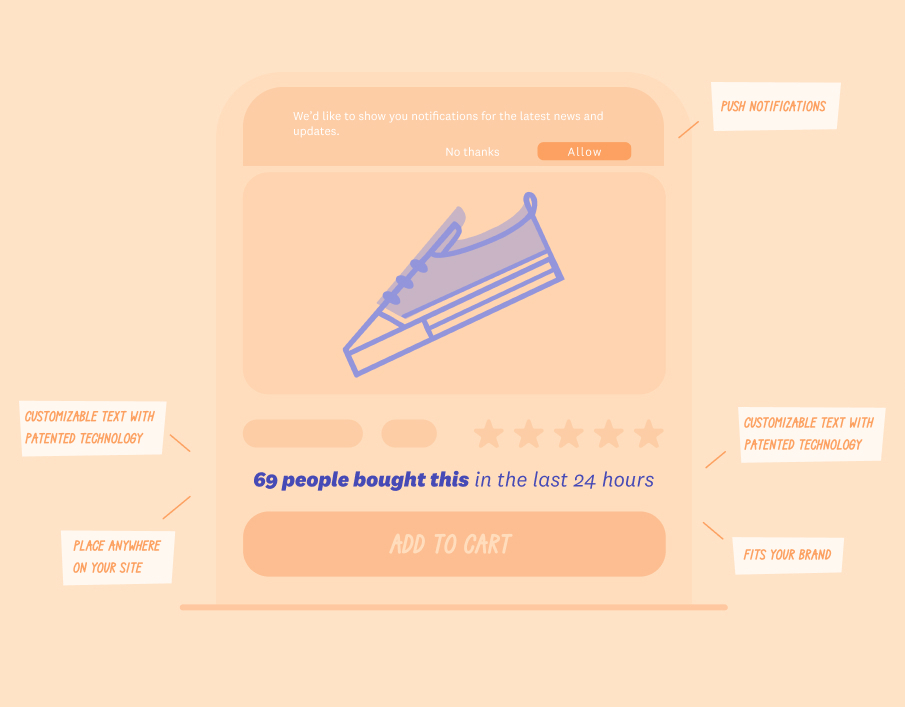Table Of Content
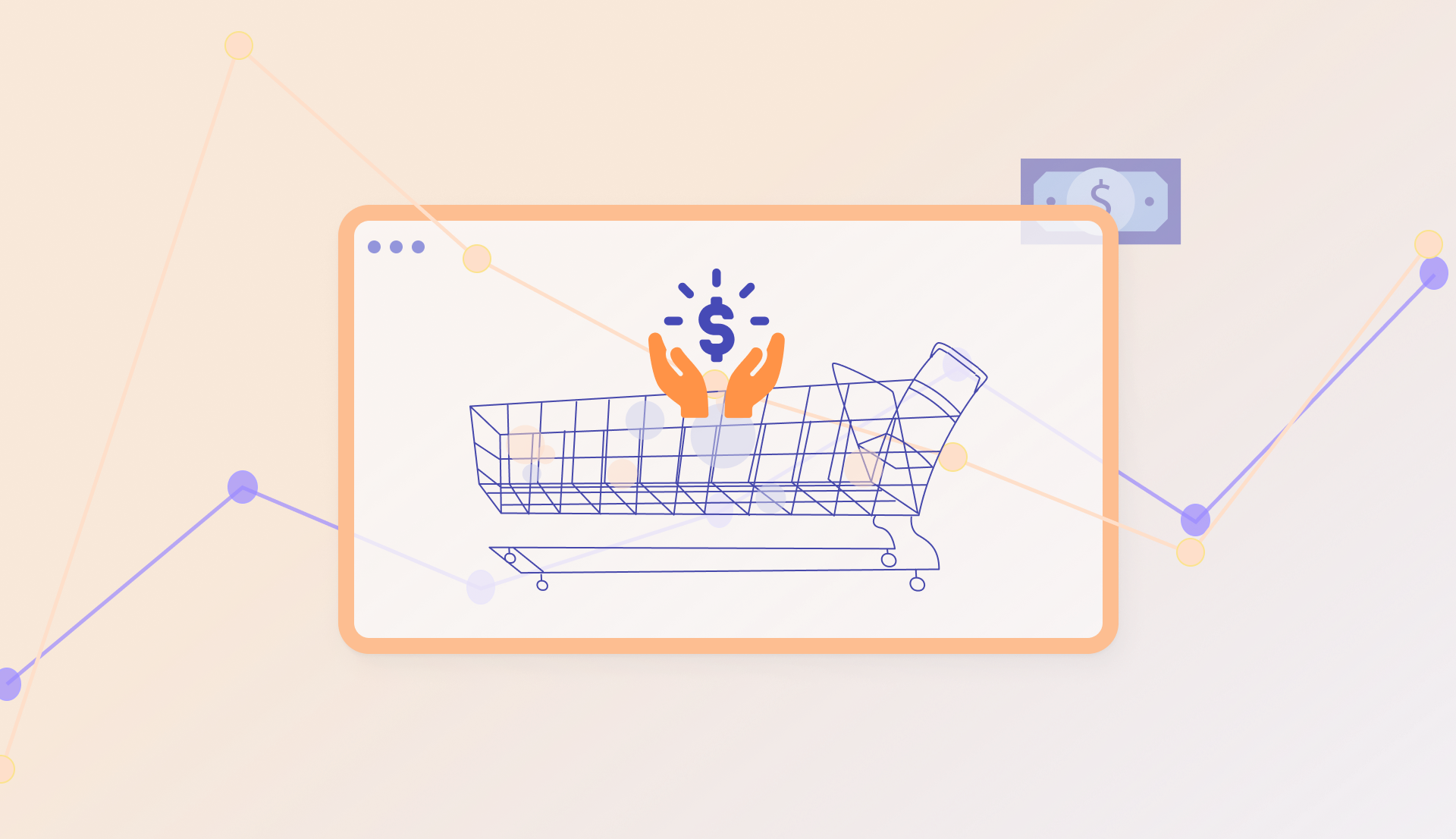
While running an online store, getting customers to spend more is a big deal.
It impacts both the top and bottom lines of an e-commerce store. When a shopper spends more, the average order value increases, directly adding to revenue growth and improving profitability.
With a higher sales volume, you can effectively negotiate terms with suppliers, reducing costs.
But, directly persuading them to maximize cart value can backfire, but you can implement a few strategies.
This article talks about the same methods to set up deals that are tough to resist. These easy-to-follow ideas can turn single-item orders into shopping sprees without complicating things for you or the shopper.
What is cart value?
Cart value is the total price of items a customer puts in their cart while shopping online. E-commerce shop owners track it to find ways to get customers to spend more.
There are various strategies store owners use to maximize cart value. Cross-selling and upselling, bundle discounts, and loyalty programs are some common ways. Several other ways can help achieve high-value carts.
Before going there, it’s best to look at a few industry benchmarks and understand the average cart value for other store owners.
Benchmarking cart value
Average order value (AOV) in e-commerce differs from product to product. A luxury goods store might have a much higher AOV than grocery stores because their products are more expensive.
Similarly, electronics stores could have higher AOVs due to electronic goods being pricier than, say, books or clothing. You can use the formula below to calculate the average order value for your store.
AOV = Total revenue / Number of orders
Below are a few notable benchmarks of AOV based on the industry.
*These numbers are based on the latest average order value statistics from Demand Yield.
You can refer to these benchmarks to understand the state of your average order value. Use it for shopping cart optimization and maximize profitability.
9 ways to optimize shopping cart value
There are a few notable techniques you can use to persuade shoppers to add more to their carts subtly. Here’s the first one.
1. Use social proof to create FOMO
Social proof builds trust among shoppers and encourages them to add more items to their carts. While browsing e-commerce stores, you often see messaging like “#X Customers purchased a Y product with Z.”
This is social proof that buyers trust that product Y goes with Z because many shoppers have purchased it the same way. Here’s how Nector uses social proof to sell mattresses.
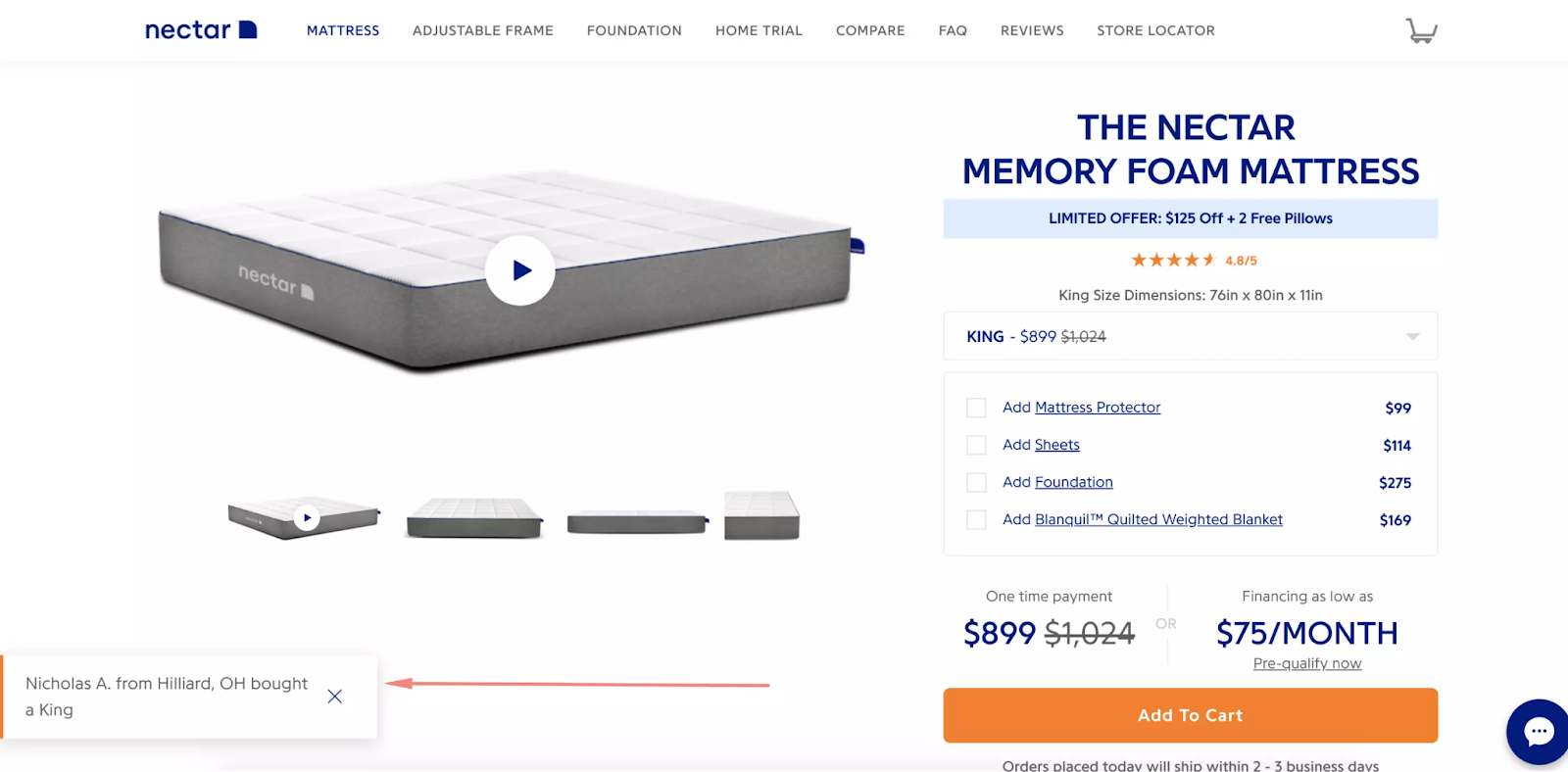
You can even create a fear of missing out (FOMO) by showing limited stock and high demand for products. This is how Etsy maximizes its cart value.
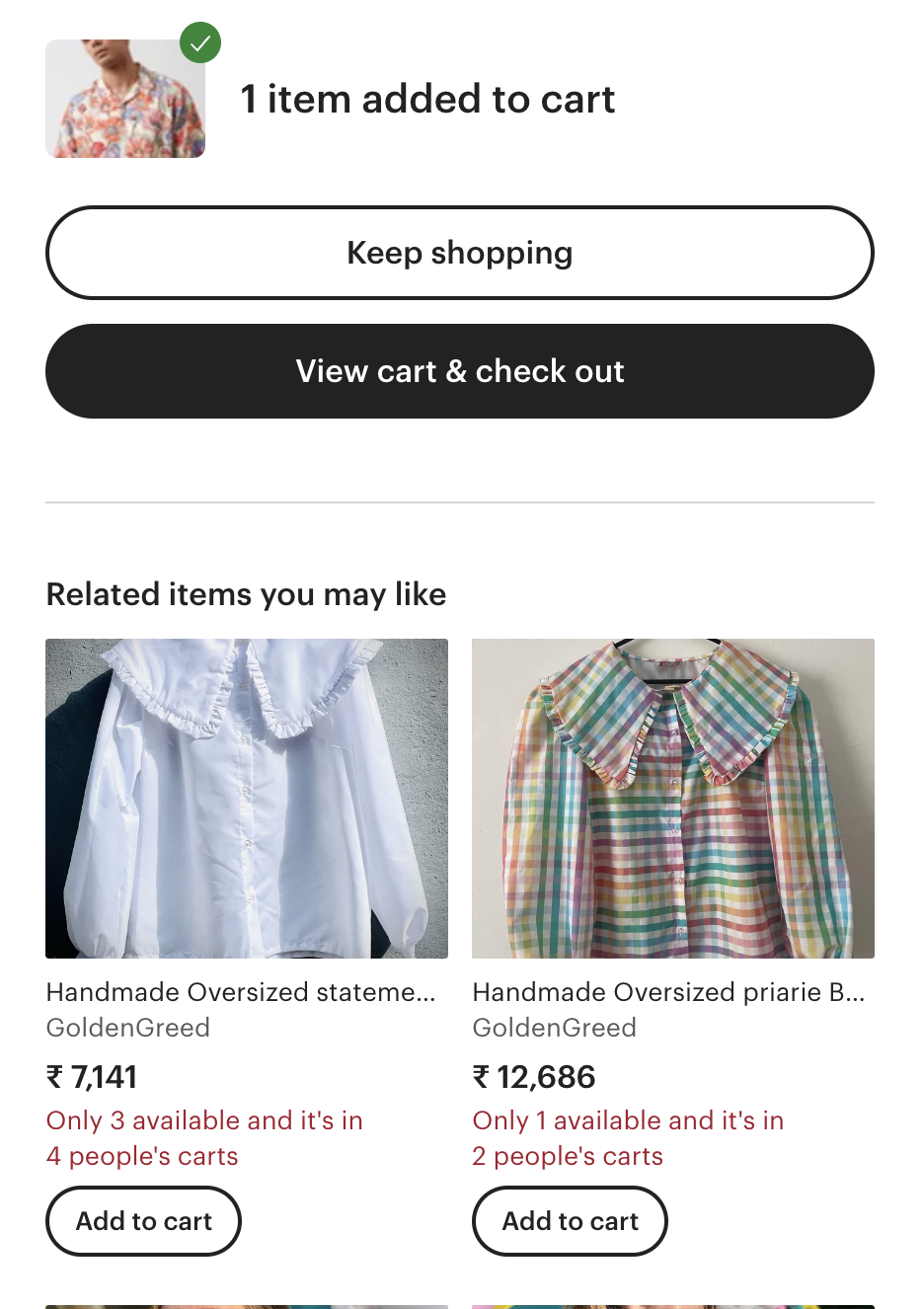
Fomo can help you establish social proof on an e-commerce store.

The software helps you display real-time pop-ups that tell customers what others are buying. When shoppers see that others are buying, they feel more confident to buy more themselves. It's like seeing a crowd in a store; it makes you want to see what's popular.
Fomo also helps you send push notifications. These alerts can share deals and new items or remind customers of items in their cart, encouraging them to come back to buy more.
Sign up for Fomo Demo and let us help you increase your cart value for more sales.
Customers might then buy more to take advantage of what they perceive as the limited-time value of a high-value product.
2. Send stock updates and offers through push notifications
Push notifications are subtle nudges to bring back buyers into the e-commerce store and encourage them to add more to carts they abandoned before.
You can alert customers that an item is low in stock to create a sense of urgency. This urgency encourages them to buy immediately rather than wait. When they decide to act fast, they might also add more items to their cart to reach the minimum order value for free delivery.
If you're like me, push notifications regarding daily-use grocery pulls me back to the store. Whenever I get back to order, even if it’s a few items, I order several items to get free delivery or apply a coupon code that’s valid when the cart value reaches a particular amount. They work incredibly well to maximize my cart’s value.
You can also combine offers with stock updates or give exclusive access to encourage customers to purchase faster and in larger quantities to take advantage of the deal and early-bird access.
Just like how Monrow sent us this notification to urge us to get those shoes before it's all gone.
3. Cross-sell and upsell
Cross-selling and upselling make customers spend more money each time they shop online. Cross-selling is when you suggest related products to a customer. For example, if someone buys dog food on your website, you can offer dog biscuit options on their carts, encouraging them to order everything they need.
Here’s how Chewy, a marketplace for pet care products, increases its cart value through cross-selling:
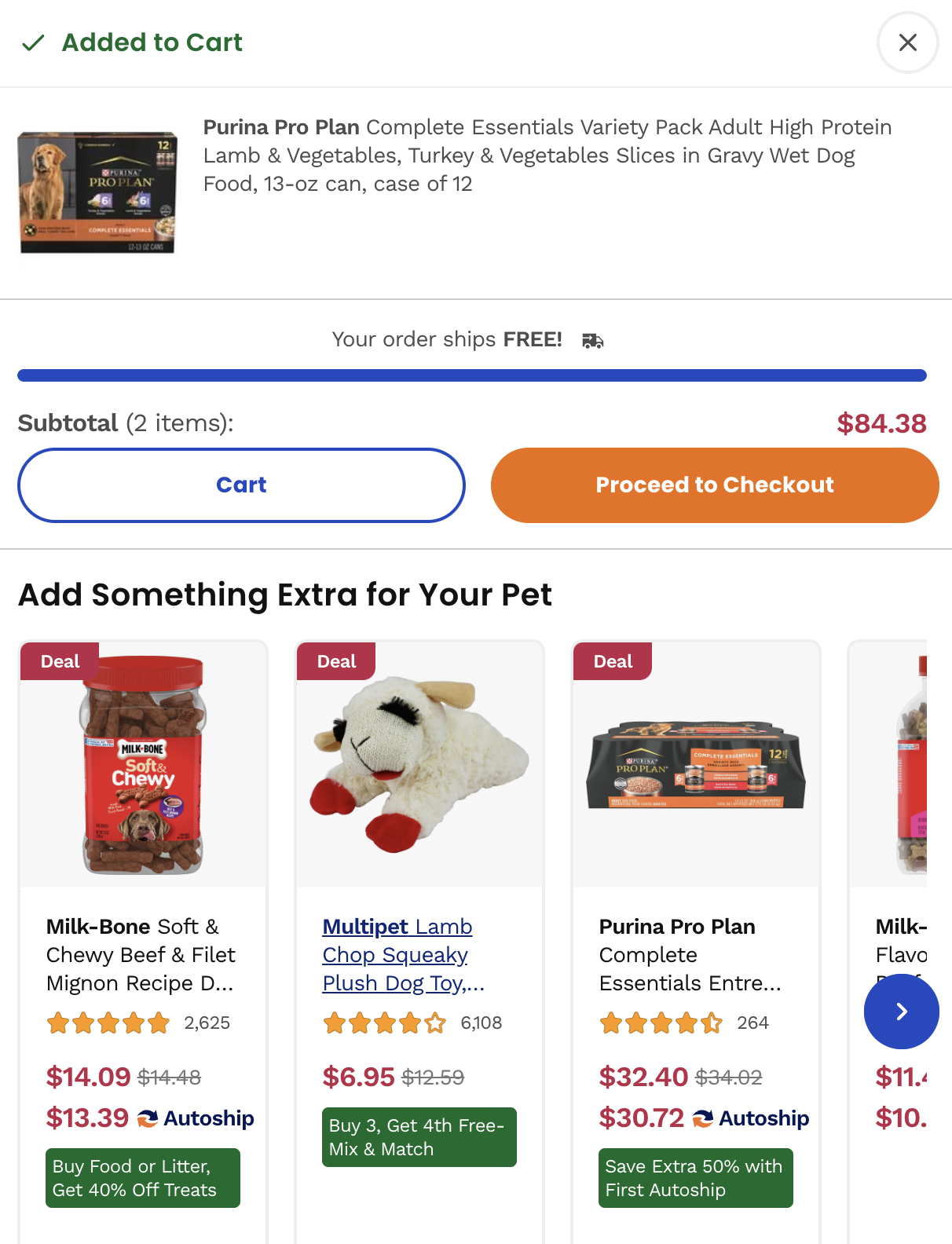
It's like when a chef asks if you want fries with your burger. Often, the customer thinks, "Why not?" and adds more to their cart.
Upselling is different. It's when you recommend a better, more expensive version of what they're already looking at. Say a customer is checking out a coffee maker. You tell them about another one that has more features and can brew coffee faster. It's like saying, "For just a little more, you can have the premium version."
You’ll find upselling happens commonly in automotive sales. The salesperson often pitches a costlier car variant and conveys how it’s a value for money when a lower variant resonates better with your needs.
You can use the same concept in e-commerce, too. Encourage shoppers to check out the costlier product by adding social proof of why it's more value for money.
4. Offer free shipping or a special discount above a specific cart value
Imagine you’re shopping online, and your cart value is $45. Then you see a deal that says, “Spend $50 and get free shipping.” You’re likely to look for another item to add to your cart. Because paying for shipping feels like a waste if you can get something extra for it instead.
Or, let's say the store offers 10% off if you spend $100. You might add more to your shopping cart to hit that $100 mark. It's like getting a bonus for shopping more. This strategy works because it makes you feel like you’re getting a better deal. And for the store, it means they sell more items.
It’s a smart move that helps everyone spend and save better. Here’s how Barnes and Noble, an American bookseller, maximizes its cart value by offering free shipping.
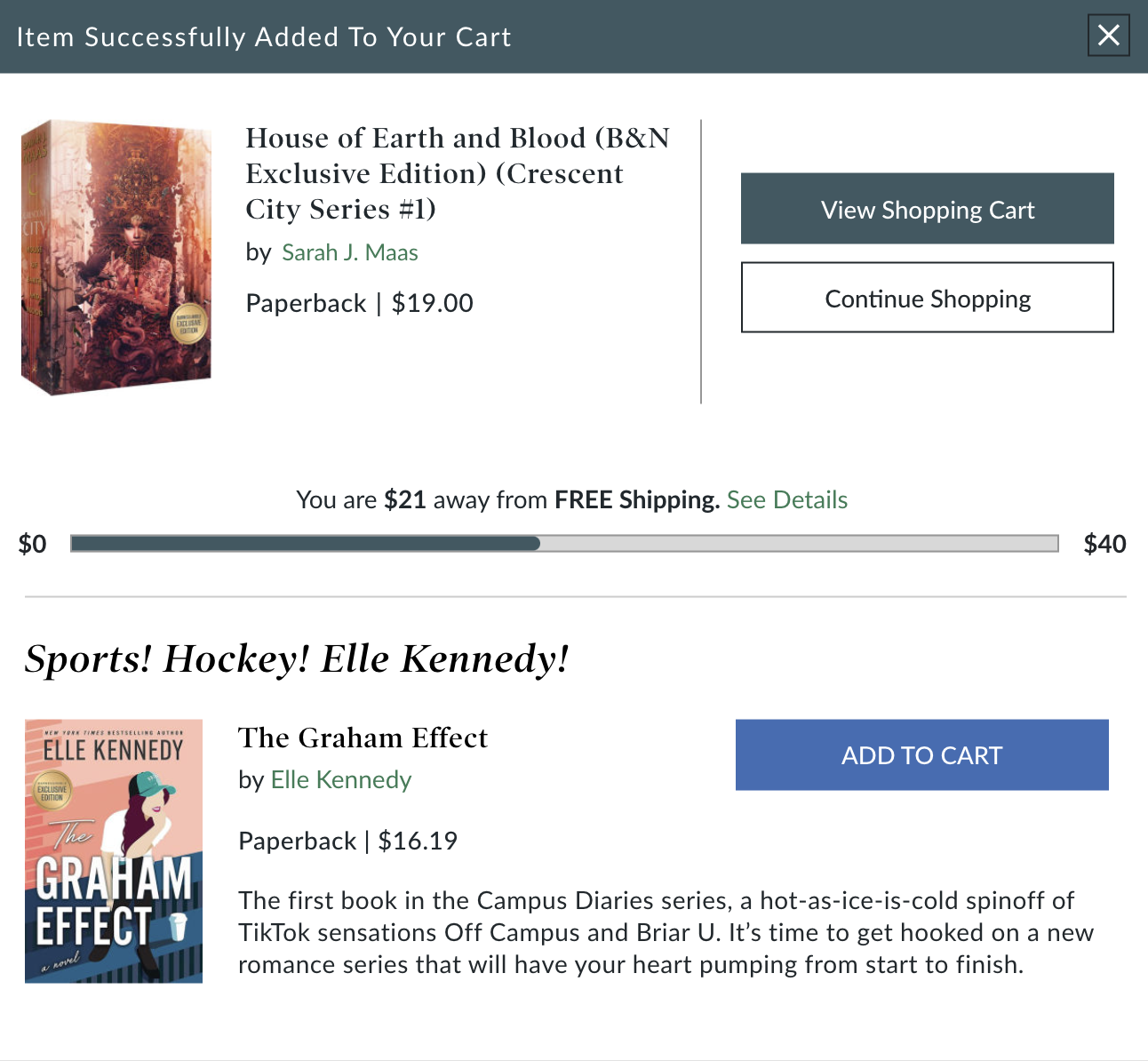
5. Send coupons for the next purchase with a minimum order value
A customer buys something from an online store. With their order, they get a coupon for a discount, but here's the catch: they can only use this coupon if they spend a certain amount next time.
The customer thinks, "I've got this coupon; I should use it before it expires," and they go back to the store to shop again.
But they can't just buy small things; they have to reach the minimum amount set by the coupon to get the deal. This means they’ll often spend more to make sure they get the discount.
This clever move does two things:
- It brings customers back to the store
- It encourages them to spend more than they might have otherwise.
GAP, a clothing brand, gives away discount coupons with every purchase. The discounts apply when the item value goes beyond a particular amount. To use the discount, shoppers end up buying more.
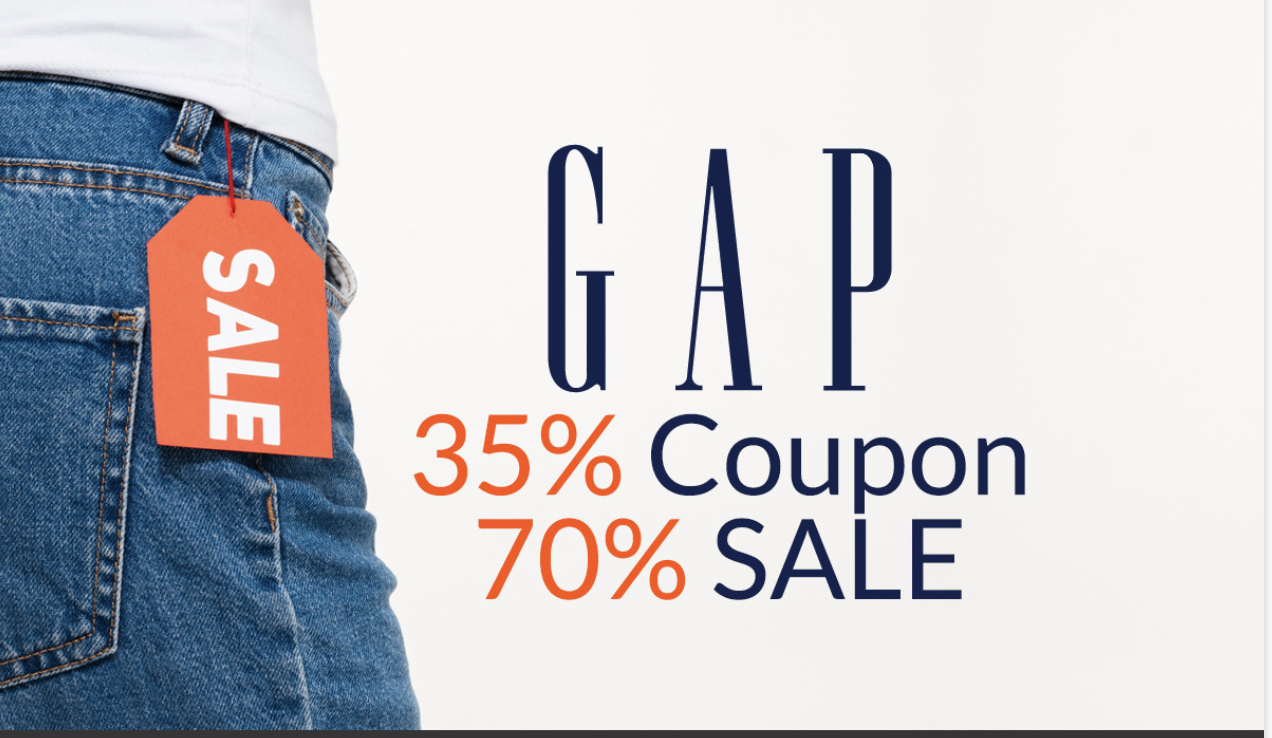
6. Create bundles
Imagine you’re selling painting supplies. Instead of having customers buy a brush here, paint there, and canvases somewhere else, you put it all together in one package. You make a bundle with the brush, paints, and canvas and call it the “Artist’s Starter Pack.”
Customers see this bundle, and it looks like a good deal. They think, “I need all these things anyway, and here they are in one easy package.” Plus, the bundle is cheaper than if they bought each item separately. So, they feel like they're saving money and hassle. Here’s how eBay does it.
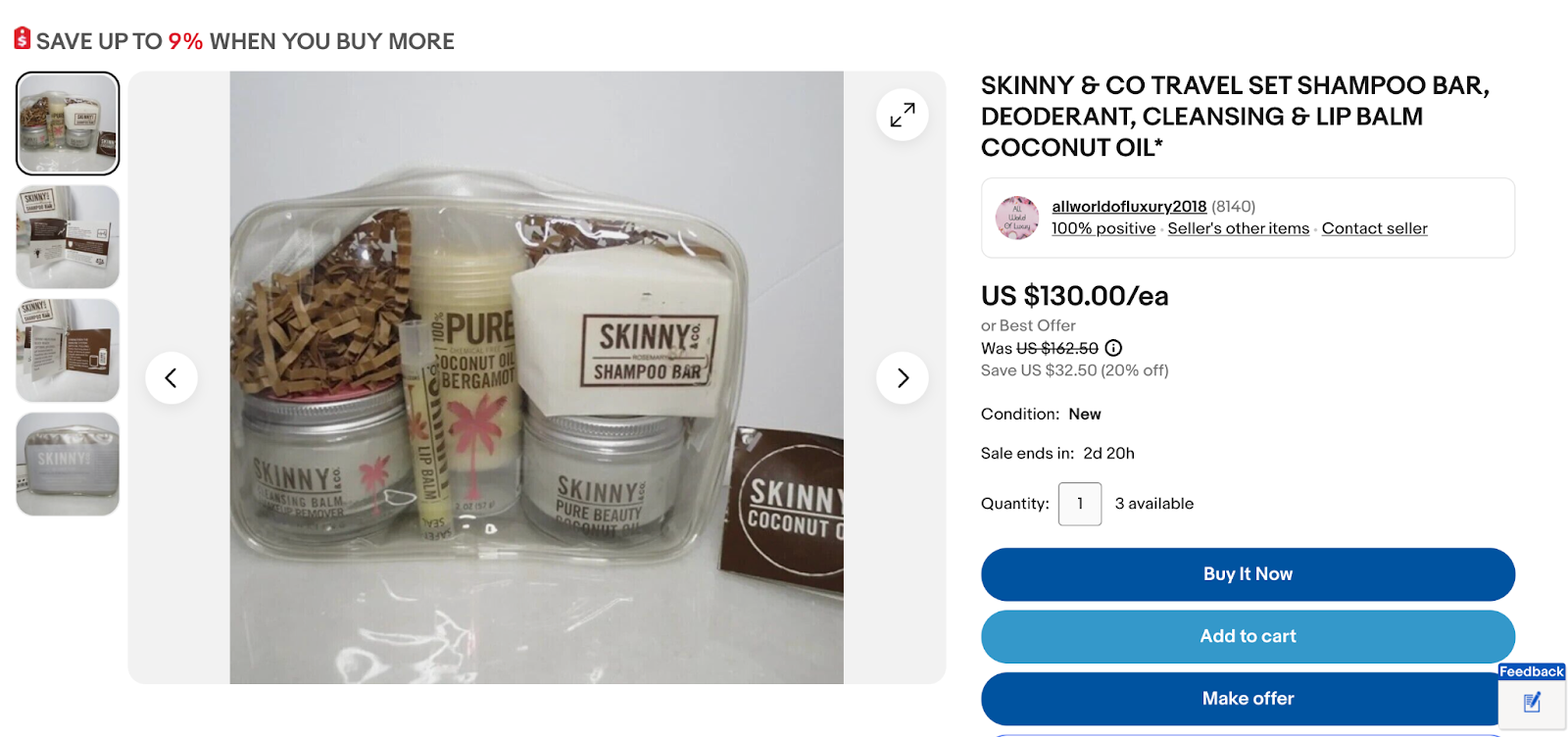
What happens is customers end up buying the bundle instead of just one item. They spend more in that one visit to your store, increasing their cart value. For the store, it means selling more items at once. It’s a win-win!
7. Let customers be a part of something beyond shopping
A store tells customers, "If your order is over $50, we’ll donate $5 to help plant trees." This gives customers a reason to spend more. People like to feel they’re doing something good. So, if they were planning to spend $40, they might throw in an extra item to reach the $50 mark. They get what they need, and they help plant trees.
Through this, the store helps a charity, which is excellent. It also makes customers happy because they contribute to a good cause by buying stuff they like. And since people add more to their carts to reach the amount that triggers the donation, their cart value increases.
When customers know their money is doing some good in the world, they often don’t mind spending a little extra.
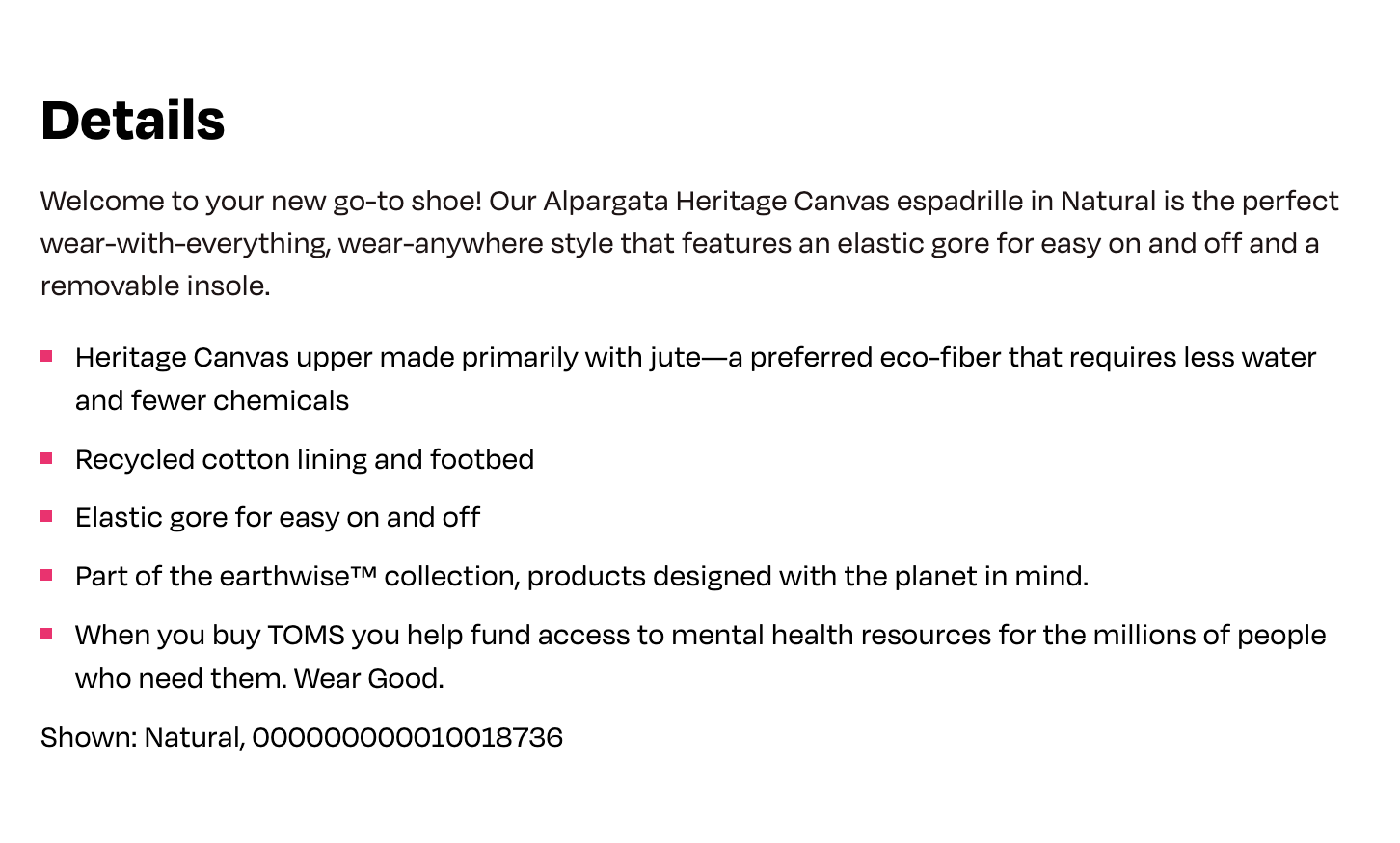
TOMS, a footwear company, helps fund access to mental health resources for millions when you purchase from them.
8. Offer buy now, pay later
When a shop offers a buy now pay later plan, it lets customers get their items immediately but pay for them over time.
A customer with a limited budget might purchase one item and plan the rest for later when they have sufficient budget. A buy now, pay later service helps customers to purchase more to leverage current discounts and offers, which might lapse later. Customers get a window of a few months to pay back without interest, helping shoppers purchase more products instantly with future budgets.
With EMIs, customers need to pay a fixed amount every month in their loan period until they completely deposit the principal with interest. Unlike EMIs, customers pay in full for these services at the end of their cycle in BNPL without any interest. If not paid, the service can charge a late fee.
BNPL services increase their customers’ spending capacity, encouraging them to purchase more every time they shop.
But with a buy now, pay later option, they might decide to go for it because they don't have to pay all the money immediately.
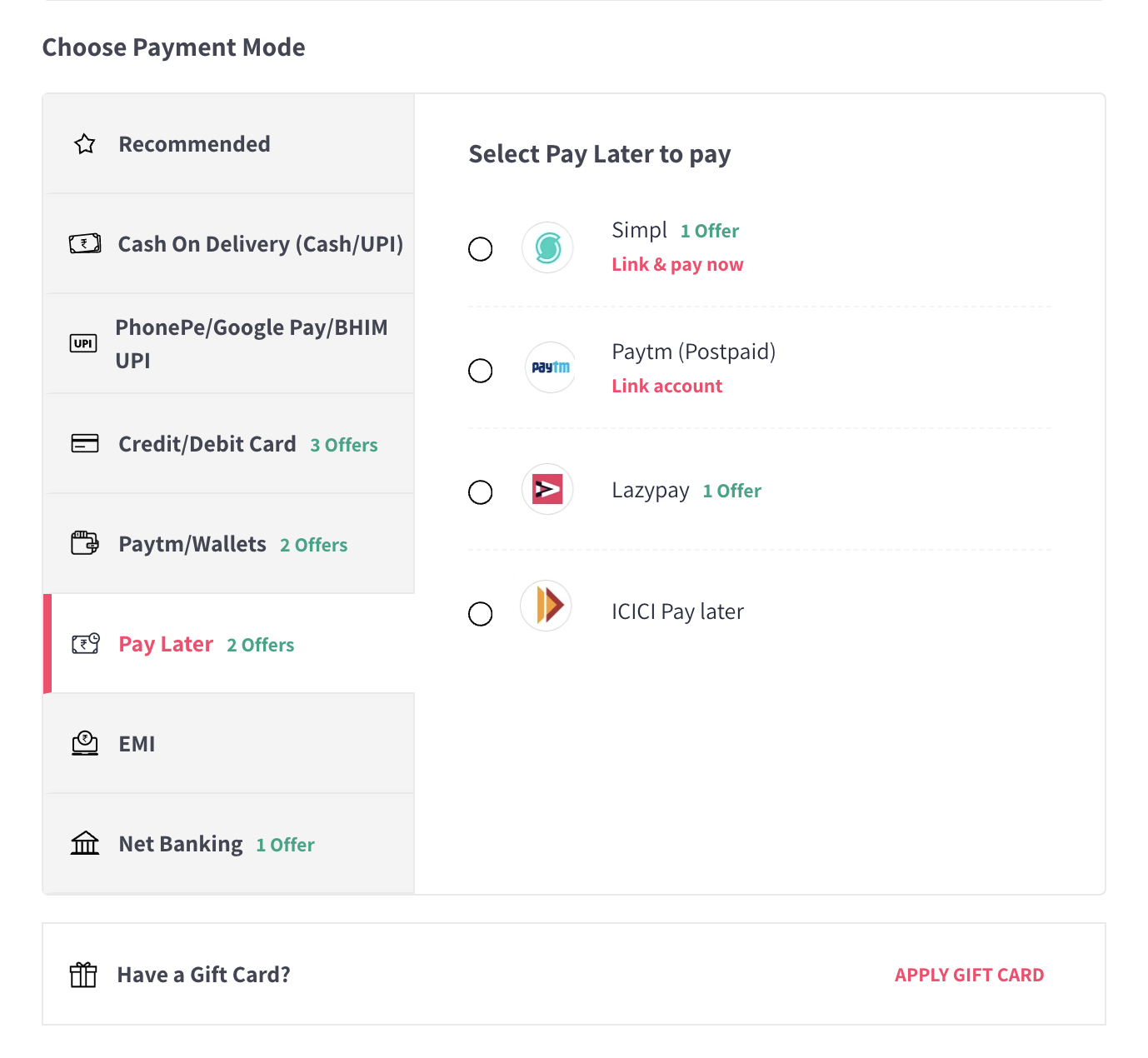
Myntra, a clothing and apparel brand, displays buy now, pay later options on the checkout page, making shoppers feel more comfortable adding more expensive items.
9. Set up a customer loyalty program
It’s a smart move to get people to spend more money each time they shop. It's like having a particular club where shopping gives you points, and points can get you cool rewards.
A shopper signs up for the loyalty program and earns points for every dollar they spend. The more they shop, the more points they rack up. As they gain more points, they get closer to rewards. It makes customers think, “If I spend a bit more, I’ll earn more points and get those rewards faster.” It’s a tempting thought that can lead to throwing an extra item or two into their shopping cart.
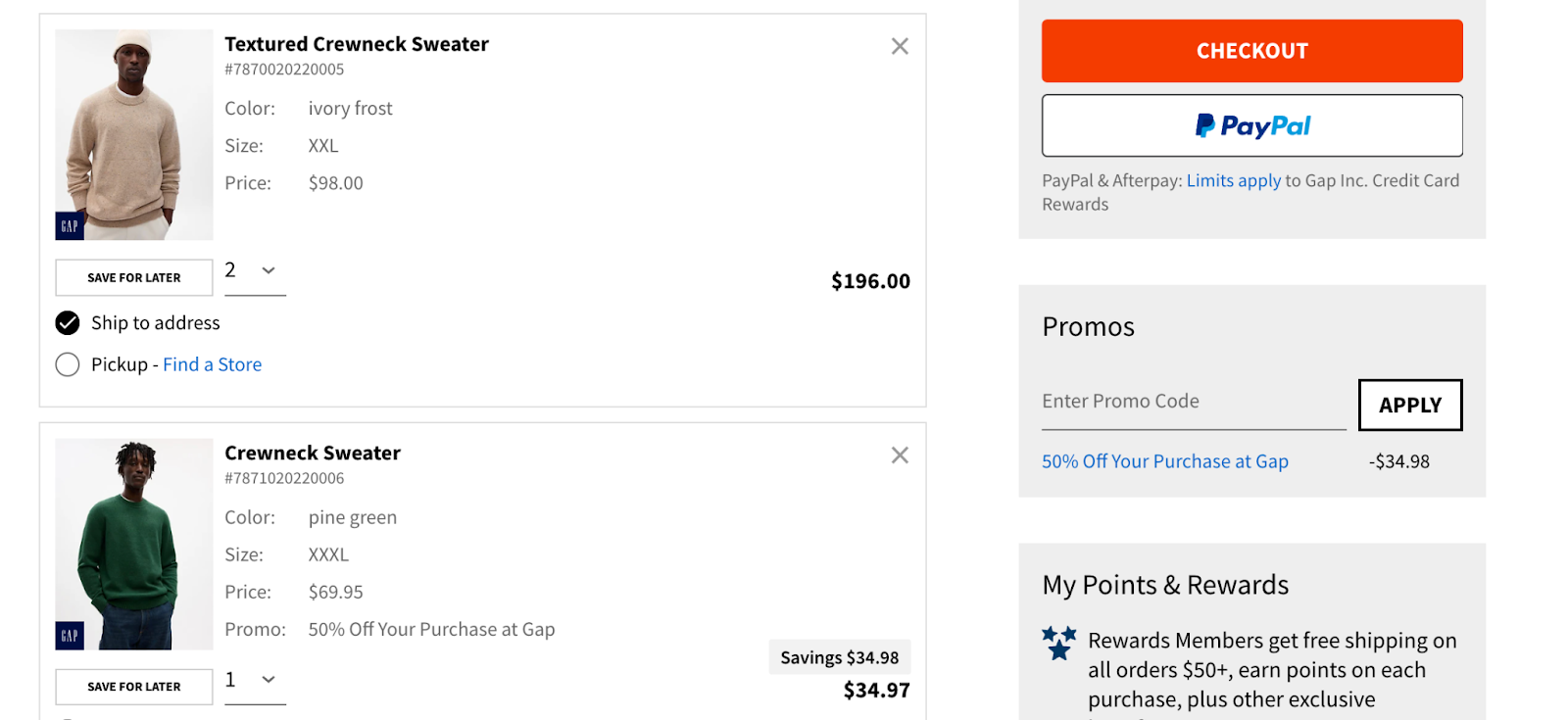
This is how GAP, a clothing retailer, encourages shoppers to maximize their cart value. It provides free shipping and points on every purchase to reward members.
Moreover, when customers know they’re working toward a reward, they return and make repeat purchases. Each time, they’re likely to spend a little more chasing after those points.
Tweaking toward a refined approach
Maximizing cart value isn’t about pushing people to buy things they don't want. It's about making it easy and rewarding for them to buy more of what they wish. The above strategies and tactics will help you nudge shoppers to add more to their carts.
Test these methods and see what resonates with your customers. Maybe they love loyalty points, or perhaps they can't get enough of those 'buy more, save more' deals. Use what you learn to keep refining your approach.
Give it a shot and start applying these ideas.
Stay tuned for more ideas, tips, tricks, and insights into the e-commerce space.
Subscribe to our newsletter and let these knowledge nuggets create a growing revenue stream from your store.
{{email-block}}




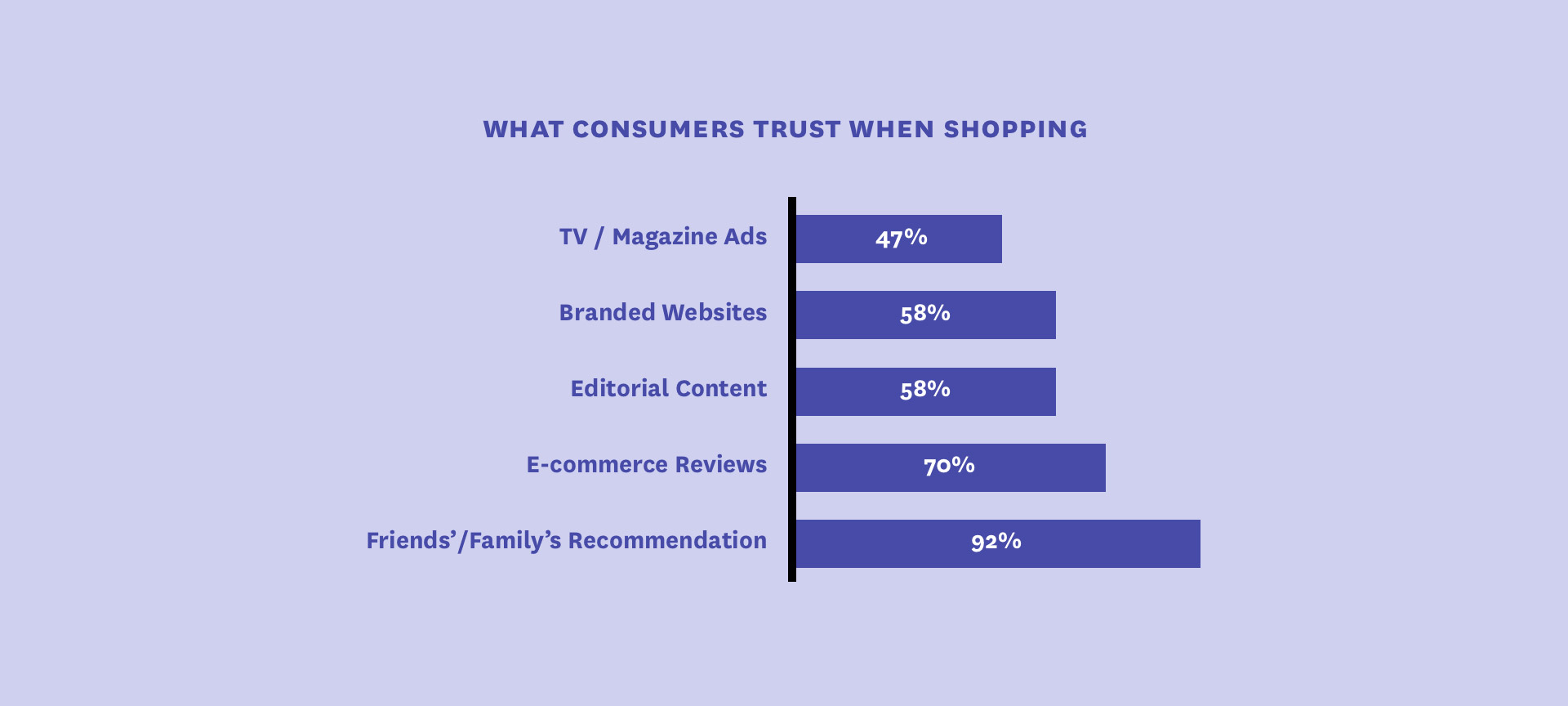
 1.svg)
 1.svg)
